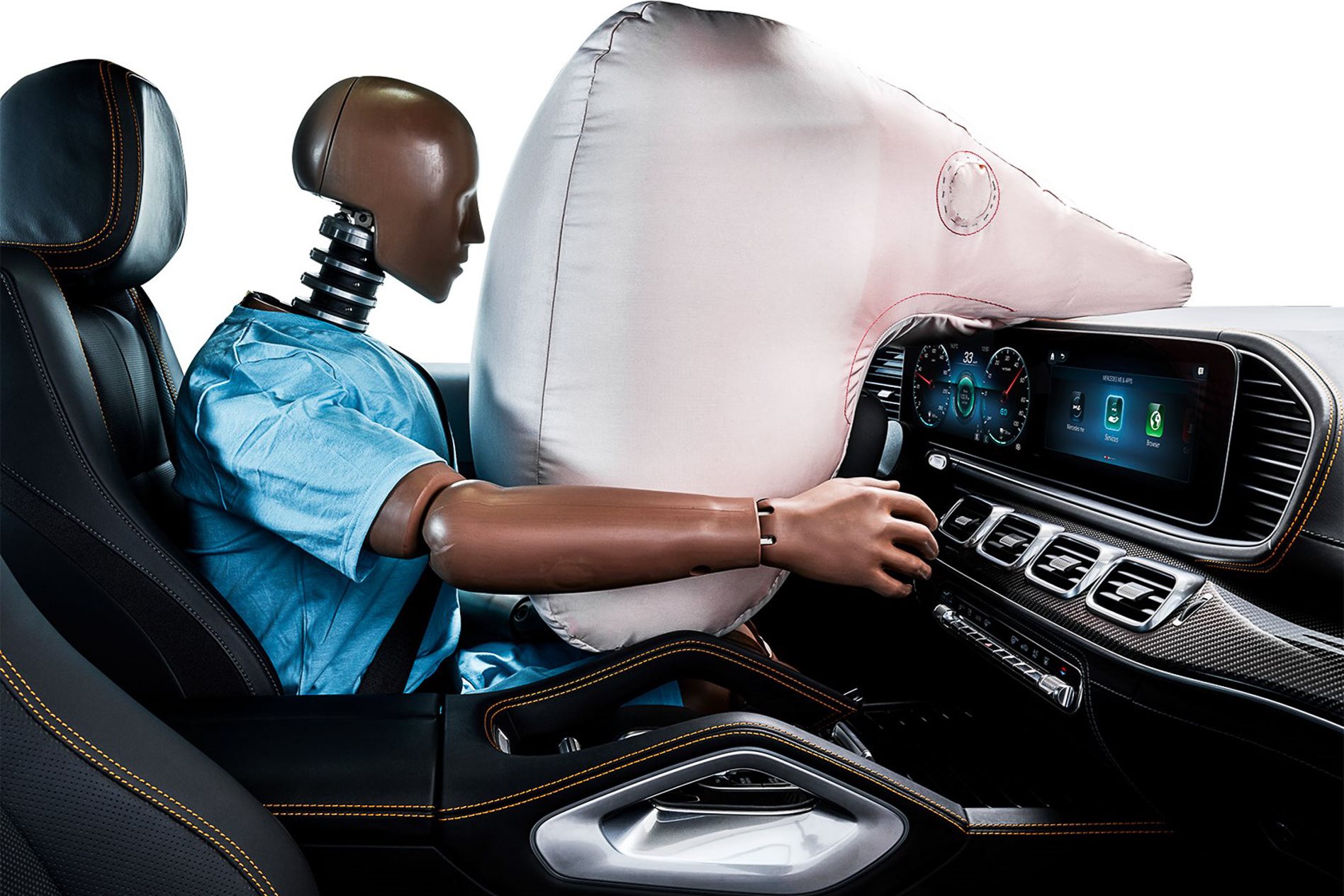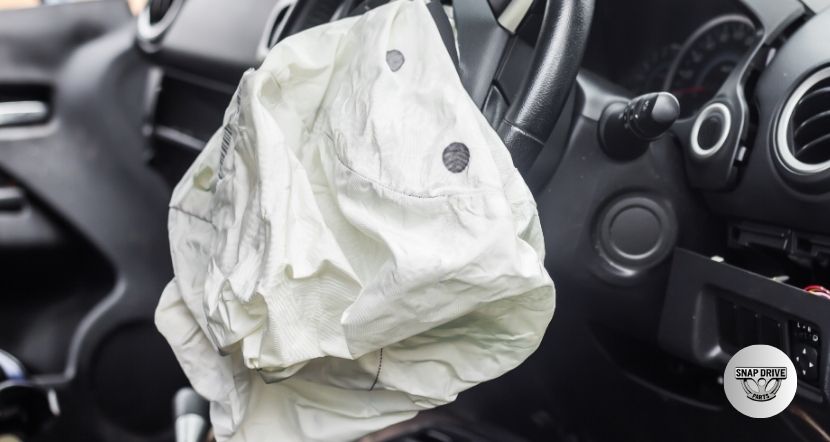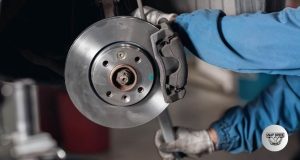Last Updated on October 16, 2025 by Aaron Blake
Have you ever wondered what really happens inside your car the moment an airbag inflates? Understanding how airbags work can give you peace of mind every time you buckle up.
These lifesaving devices activate in a blink, protecting you from serious injuries during a crash. You’ll discover the simple yet powerful technology behind airbags and why they are a crucial part of your car’s safety system. Keep reading to learn how this invisible shield springs into action just when you need it most.
Contents
Airbag Components
Airbags protect drivers and passengers during a crash. They inflate quickly to cushion the impact. Several parts work together to make airbags work right.
Understanding airbag components helps you know how safety is made in cars. Each part has a special job in the airbag system.
Sensors And Control Units
Sensors detect sudden stops or crashes. They send signals to the control unit. The control unit decides if the airbag should inflate.
These parts work fast to keep passengers safe. They check how hard the crash is and when to trigger the airbag.
- Accelerometer sensors measure car speed changes
- Pressure sensors detect impact force
- Control unit processes sensor data instantly
Inflator Mechanism
The inflator creates gas to fill the airbag. It works when the control unit gives the signal. The gas inflates the airbag in milliseconds.
Inflators use chemicals or compressed gas. They release gas fast to protect passengers from hitting hard surfaces.
- Chemical inflators use a small explosion
- Compressed gas inflators release stored gas
- Both fill the airbag within 0.05 seconds
Airbag Cushion
The airbag cushion is a strong fabric bag. It inflates to create a soft barrier. This cushion helps reduce injuries in a crash.
The cushion folds inside the steering wheel or dashboard. It unfolds quickly to protect the driver or passenger.
- Made from nylon or polyester fabric
- Coated to resist heat from inflation
- Designed to deflate slowly after impact

Credit: www.whichcar.com.au
Activation Process
Airbags protect passengers during a car crash. They inflate quickly to cushion the impact. The activation process includes crash detection, inflation timing, and deflation sequence.
This process happens in milliseconds to keep passengers safe. Each step works together to ensure the airbag functions correctly.
Crash Detection
Sensors inside the car detect sudden changes in speed or force. These sensors send signals to the airbag control unit. The control unit decides if the crash is severe enough to activate the airbags.
- Accelerometers measure rapid deceleration
- Pressure sensors monitor impact force
- Signal is sent to airbag control module
- Control module checks crash severity
- If needed, the airbag system activates
Inflation Timing
The airbag inflates in less than 50 milliseconds. This fast inflation cushions the passenger before impact. The timing is critical to provide protection without causing injury.
| Event | Time after Crash (milliseconds) |
| Crash detection | 0-10 |
| Signal to inflate | 10-20 |
| Airbag inflation starts | 20-40 |
| Full inflation | 40-50 |
Deflation Sequence
After inflation, the airbag starts to deflate. This reduces pressure on the passenger. Deflation happens through small holes in the airbag fabric.
The deflation process allows the passenger to move safely after impact. It also prevents suffocation or injury from a fully inflated airbag.
- Inflated airbag cushions the passenger
- Small vent holes release gas
- Airbag slowly deflates after impact
- Passenger can exit the vehicle safely
Types Of Airbags
Airbags are safety devices that inflate during a crash. They help protect passengers from injury.
Different types of airbags serve different parts of the car. Each type has a specific role in safety.
Front Airbags
Front airbags are the most common type. They are located in the steering wheel and dashboard.
These airbags protect the driver and front passenger during a head-on collision. They deploy quickly to cushion the impact.
Side And Curtain Airbags
Side and curtain airbags protect the sides of passengers. They help in side-impact crashes and rollovers.
- Side airbags are usually in the seat or door panel.
- Curtain airbags drop down from the roof lining.
- They cover windows and protect the head and chest.
Knee And Rear Airbags
Knee airbags protect the lower body. They are placed below the dashboard in front of the knees.
Rear airbags offer extra protection for backseat passengers. They help reduce injuries in rear-end crashes.
| Airbag Type | Location | Protection Area |
| Front Airbags | Steering Wheel, Dashboard | Head and Chest (Front Seats) |
| Side Airbags | Seats or Door Panels | Torso (Side of Body) |
| Curtain Airbags | Roof Lining | Head (Side Windows) |
| Knee Airbags | Below Dashboard | Knees and Lower Legs |
| Rear Airbags | Back Seat Area | Rear Passengers |

Credit: www.seatcoversolutions.com
Safety Benefits And Limitations
Airbags help protect drivers and passengers during car crashes. They reduce the risk of serious injuries.
These safety devices have limits and work best with seat belts. Knowing how airbags work can keep you safer.
Injury Reduction
Airbags cushion the impact when a crash happens. They stop the head and chest from hitting hard surfaces.
They lower the chance of head, neck, and chest injuries. This helps save lives in many accidents.
- Reduce force on the body during a crash
- Prevent contact with the steering wheel or dashboard
- Work best with seat belts to protect fully
Proper Usage Tips
Always wear your seat belt with airbags. The belt keeps you in the right position for airbags to help.
Keep a safe distance from the steering wheel. Sitting too close can cause injuries when airbags deploy.
- Wear seat belts at all times
- Adjust your seat to keep space from airbags
- Keep children in the back seat
Common Misconceptions
Some people think airbags work alone without seat belts. Airbags only help if you use your seat belt.
Others believe airbags prevent all injuries. They reduce injuries but cannot stop every harm in a crash.
- Airbags do not replace seat belts
- They cannot protect in all crash types
- Airbags deploy only in moderate to severe crashes

Credit: www.cardekho.com
Frequently Asked Questions
How Do Airbags Detect A Crash?
Airbags use sensors to detect sudden stops or impacts, triggering inflation within milliseconds.
What Materials Are Airbags Made From?
Airbags are typically made from strong nylon fabric that inflates quickly and safely.
How Fast Do Airbags Inflate During A Collision?
Airbags inflate at about 200 miles per hour, providing quick protection to passengers.
Can Airbags Cause Injuries In A Crash?
Airbags may cause minor injuries but greatly reduce the risk of serious harm.
How Often Should Airbags Be Checked Or Replaced?
Airbags usually last the car’s lifetime but should be checked after any crash.
Conclusion
Airbags protect drivers and passengers during crashes. They inflate quickly to cushion the impact. Sensors detect collisions and trigger airbags instantly. This system reduces injuries and saves lives. Regular car maintenance helps airbags work properly. Understanding airbags helps you stay safer on roads.
Always wear your seatbelt with airbags for best safety. Cars use airbags as a vital safety tool today. Safety technology continues to improve for every driver. Stay informed and drive carefully to protect yourself.





